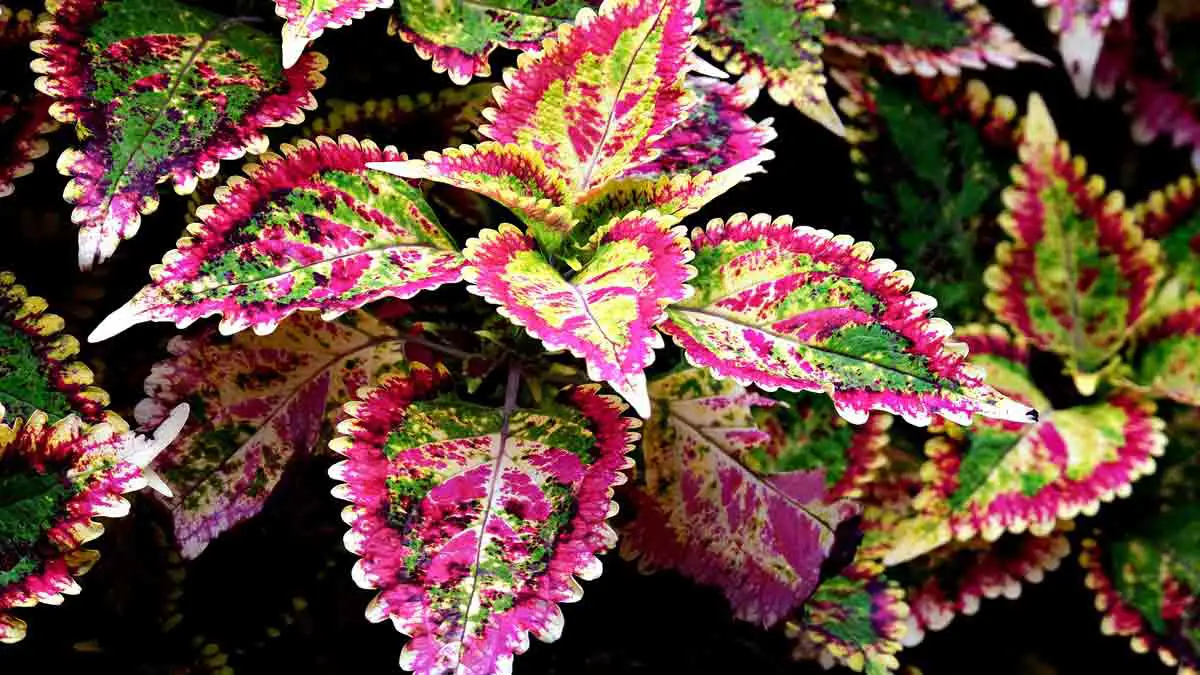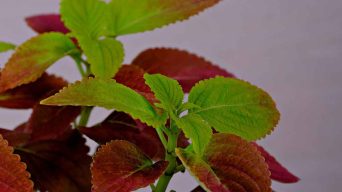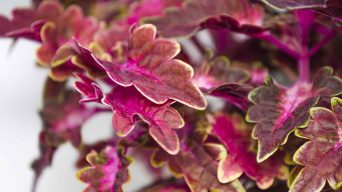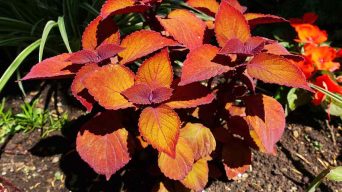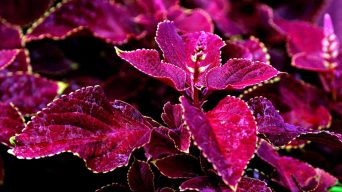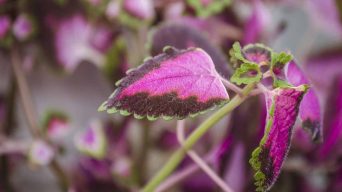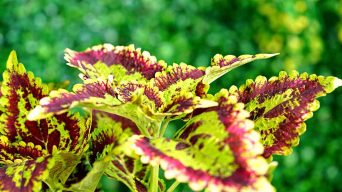Coleus leaves turning white is usually due to sun exposure. Overwatering, underwatering, temperature stress, and powdery mildew can also cause discolored leaves. To avoid these problems, keep coleus in indirect sunlight and well-drained soil.
Coleus is a popular decorative foliage plant grown for its colorful leaves. The vibrant colors of the coleus leaves are an important part of why this plant is so attractive.
Therefore, it can be concerning when those beautiful leaves start to turn white. White patches on the coleus leaves indicate a serious problem that can quickly devastate your entire plant.
Although there are a few potential causes of white patches on coleus leaves, there are also solutions you can use to restore the plant’s health.
In this article, we will discuss what may cause your coleus leaves to turn white, how to treat it, and how to prevent it from happening in the future.
Causes of Coleus Leaves Turning White and How to Treat Them
Coleus leaves turning white can be caused by several different reasons. Knowing why your coleus leaves are turning white is essential to understanding how to keep them healthy and vibrant.
Let’s look at some causes of this discoloration in your plant.
1. Overexposure to Sunlight (Sunscald)
One of the most common causes of coleus leaves turning white is overexposure to sunlight. Too much sun can cause the leaves to become “sunscalded,” which results in white spots and discoloration.
Coleus plants need full sun to partial shade, so it’s important to make sure you aren’t placing them in direct sunlight for too long.
A place with bright indirect light or a few hours of full sun in the morning and then shade in the afternoon should be ideal.
2. Underwatering and Overwatering
Coleus leaves turning white can be a sign of underwatering or overwatering.
Underwatering occurs when the soil is allowed to dry out too much, and there isn’t enough water for the plant to absorb.
The coleus leaves will turn yellow and then white as they struggle to survive without enough moisture.
On the other hand, overwatering coleus plants causes waterlogging in the soil and prevents oxygen from reaching the roots. This leads to rotting roots, which also causes the leaves to turn white.
Knowing these two factors is essential for ensuring your coleus stays healthy and vibrant with its natural colors.
Coleus must be watered properly to avoid the leaves turning white and ensure its natural beauty.
To do this, you will need to check the soil moisture of your plant regularly, as different soils have varying water absorption rates. This can be done by sticking your finger into the soil to see how moist it is.
If it’s dry, give your coleus a good drink and make sure not to overwater it. If there’s too much water present, wait for the soil to dry out before giving your coleus any more water.
In general, coleus should be watered about once a week.
3. Temperature Stress
Coleus plants are sensitive to temperature changes. If the plant is exposed to too cold or too hot temperatures, it can cause leaves to turn white.
Cold temperatures, in particular, can damage the foliage and cause a condition known as “frost burn.”
Frost burn happens when the leaves of coleus become pale or white with dead-looking spots that eventually dry out. This type of stress on the plant can also lead to leaf drop and discoloration.
To prevent this from happening, make sure your coleus is planted away from cold drafts and protect it from frost if needed.
The ideal temperature range for happy and healthy coleus plants is between 60-75 degrees Fahrenheit.
4. Diseases Such as Powdery Mildew and Fungal Infections
Coleus plants are particularly vulnerable to powdery mildew, a type of fungal infection that manifests as a white, dusty film on the leaves.
Affected coleus leaves can turn white and become crispy or distorted in shape.
To prevent this infection, it is important to provide adequate air circulation around the plant and ensure that it is not exposed to too much moisture. If the problem persists, fungicide sprays can provide relief.
Coleus plants are also susceptible to other fungal diseases, such as downy mildew. These infections can cause yellow discoloration and white spots on the leaves.
In this case, it is important to identify the type of infection to determine the best course of action. A fungicide may be necessary to treat these types of infections as well.
It’s also important to cut away any infected leaf and dispose of them properly to stop the spread of any fungal disease.
5. Low Light Conditions
When coleus leaves turn white, it may result from low light conditions. If you find that your plant is not getting enough sunlight or the lighting in its environment is too dim, it’s likely to cause a whitening of the foliage.
The lack of light decreases the amount of photosynthesis the plant can perform—the process by which plants convert light energy into chemical energy. As a result, the leaves will turn white and eventually die off if left in dark conditions for too long.
Make sure to reposition your coleus near a window or source of bright light to receive sufficient light for photosynthesis. With enough light, your coleus’s leaves should return to their original color in no time.
6. Chlorosis
Coleus leaves turning white can be a sign of chlorosis caused by the lack of chlorophyll in the plant due to a nutrient deficiency or poor soil conditions.
Chlorosis can be identified by yellowing leaves and eventually turning white as there is not enough chlorophyll to remain green. Plants that are affected by chlorosis will also appear stunted and lack growth.
To treat chlorosis, increase the nutrient content of your soil by fertilizing regularly and ensuring that the soil pH level is correct. If possible, repotting in new, nutrient-rich potting soil can also help to restore the plant’s health.
7. Natural Pattern in Some Coleus Varieties
In some cases, coleus leaves may turn white due to natural patterns in the variety.
These unique variegated patterns can often cause striking white streaks or spots on some foliage.
Varieties such as ‘Kong Rose’ and ‘Wizard Jade’ feature a natural pattern of creamy-white or silverish-white areas on their leaves, which may be mistaken for a sign of disease or other damage.
If your coleus features any of these natural patterns, it’s likely not diseased and simply responding to its unique genes.
How to Prevent Coleus Leaves from Turning White
To ensure that your coleus plant stays healthy and its leaves remain green, make sure to provide it with the right environment.
Here are some tips for preventing coleus leaves from turning white:
- Make sure to provide the coleus with enough light, as it prefers bright indirect sunlight. Direct sun can cause the leaves to turn white.
- Keep an eye on soil moisture levels and water your plant as needed – make sure not to let it dry out completely or become overly soggy.
- Feed your plant with a balanced liquid fertilizer every other week during the growing season to ensure it gets the nutrients needed to stay healthy.
- Prune away any dead or diseased leaves, as they can spread diseases and cause other leaves to turn white.
- Pay attention to the room’s temperature – make sure it’s not too warm or cold for your coleus, as extreme temperatures can also cause its leaves to turn white.
- Plant your coleus in well-draining soil, as soggy soil can lead to root rot and cause the leaves to turn white.
- When watering, make sure to water from the base of the plant and avoid getting water on the leaves. This can prevent fungal infections leading to white spots and streaks on the foliage.
- Repot your coleus every few years to refresh the soil and provide it with nutrients.
By following these tips, you should be able to keep your coleus healthy and its leaves vibrant and green!
Final Thoughts
No gardener likes to watch their plants suffer, and coleus leaves turning white is a distressing sight.
Fortunately, some strategies can be used to help keep the leaves healthy and vibrant.
Regularly checking for signs of distress, providing shade and adequate drainage, and providing plenty of water and fertilizer can all contribute to the health of your coleus plant.
As always, a little extra care can go a long way in helping your plants thrive.

